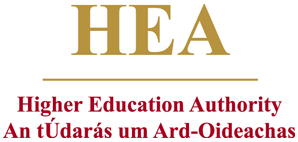Mór Ní Óráin - Maighréad Ní Dhomhnaill
Recording: [Download audio file]
[Download AIFF audio file (of processed ‘user’ version)]
[Download AIFF audio file (of archive version)]
Transcript
Bhí bean 'na cónaí in Éirinn fadó agus bhí sí cúig chéad bliain de aois. Bhí Ó Domhnaill i nDún na nGall an t-am sin agus chualaidh sé iomrá uirthi. Agus rinn sé amach go rachadh sé go bhfeicfeadh sé an rabh sin fíor. Shiúil sé leis agus fuair sé eolas an bhealaigh go dtí go dtáinig sé go dtí an teach. Chuaigh sé isteach agus bhí sean-nduine[1] agus seanbhean 'na suí ag an tinidh agus iad in aois leanbaíochta.
"Cá bhfuil bhur máthair?" ar seisean.
"Ó," ar siadsan, "tá sí amuigh ag buachailleacht."
Chuaigh sé amach 'un na páirce agus chonaic sé an bhean a bhí ag coimheád na mba agus d'fhiafraigh sé daoithe, "An tusa Mór Ní Óráin?"
"Is mé," arsa sise.
"Bhuel," arsa seisean, "ca tuighe[2] a bhfuil tusa comh hóg agus níon agus mac 'na suí ins an teach agus iad in aois leanbaíochta?"
"Bhuel," arsa sise, "níor ith mise greim ariamh ach nuair a bhí ocras orm. Níor ól mé deoch ariamh ach nuair a bhí tart orm. Níor shuigh mé ariamh i mo chónaí nuair a bhí a fhios agam go bhfaighinn obair ag mo chomharsain. Agus mura gcreide tusa an rud a dúirt mé, bhí mé fiche bliain nuair a tháinig mé 'n an bhaile seo. Níl a'n[3] bhliain ó shoin nár mharbh mé molt agus chuir mé a chnámh isteach i gcófra[4] atá ansiod[5] ag an doras. Gabh thusa isteach anois agus cuntais go bhfeicí tú."
Chuaigh... Chuaigh Ó Domhnaill isteach. Chuntais sé amach ceithre chéad agus ceithre scór cnáimh agus chonaic sé ansin go rabh caint na mná fíor. Ní rabh a dhath le déanamh aige ach pilleadh 'na bhaile agus a bheith sásta.
Translation
There was a woman living in Ireland long ago and she was five hundred years old. The O'Donnell was in Donegal at that time and he heard tell of her. And he decided that he would go to see if it was true. Off he went and he found the way as far as the house. He went in and there was an old man and an old woman sitting by the fire, and they were in their dotage.
"Where is your mother?" he said.
"Oh," they said, "she is out herding."
He went out to the field and he saw the woman who was minding the cows and he asked her, "Are you Mór Ní Óráin?"
"I am," she said.
"Well," he said, "How is it that you are so young with a daughter and a son in the house in their dotage?"
"Well," she said, "I never ate a morsel except when I was hungry. And I never drank a drink except when I was thirsty. I never sat resting when I knew that I would get work from the neighbours. And if you don't believe what I've said, I was twenty years old when I came to this town. There isn't a year since then that I didn't kill a wether and put his bones in that press there by the door. Go in now and count them so that you may see."
O'Donnell went in. He counted out four hundred and eighty bones and he saw then that what the woman was saying was true. There was nothing to do but return home and be content.
Footnotes
Cf. Dónall Ó Baoill, An teanga bheo: Gaeilge Uladh (Dublin, 1996), 148: sean’uine 'old man'; seanduine 'old person'. (Back)= cad chuige. Cf. Ó Baoill, op. cit., 127. (Back)
= aon. (Back)
Leg. gcórtha? Cf. Ó Baoill, op. cit., 129. (Back)
= ansiúd. (Back)
Commentary
This short story is apparently connected to lore concerning the figure of Mór/Máire Ní Óráin. She is likely to be associated with the character of Mór, a folkloric survival of mythology surrounding a land goddess of pre-Christian Ireland. Figures such as the Mór-Ríoghan and Mór Mumhan are avatars of this goddess who, in the case of the latter, was said to inhabit a house in the far western parish of Dún Chaoin, county Kerry. See Dáithí Ó hÓgáin, Myth, legend and romance (New York, 1991), 305-10. For an example of similar tradition from Kerry, see Séamus Ó Duilearga, Leabhar Sheáin Í Chonaill (Dublin, 1948), 218-21. Another story from Donegal concerning Mór can be found in the Doegen Collection, under the title 'Máire Ní Óráin', from the storytelling of Pádraig Ó Conacháin.
This story is transcribed also in Róise Ní Bhaoill, Ulster Gaelic voices: bailiúchán Doegen 1931 (Belfast, 2010), 174-7. Another version from the same speaker appears in An tUltach 20:4 (1943), 4. A very similar version appears in Seosamh Laoide, Cruach Chonaill (Dublin, 1913), 85-6.
Title in English: Mór Ní Óráin
Digital version published by: Doegen Records Web Project, Royal Irish Academy
Description of the Recording:
Speaker:
Maighréad
Ní Dhomhnaill from Co.
Donegal
Person who made the recording:
Karl Tempel
Organizer and administrator of the recording scheme: The Royal Irish Academy
In collaboration with: Lautabteilung, Preußische Staatsbibliothek (now Lautarchiv,
Humboldt-Universität zu Berlin)
Recorded on 02-10-1931 at 11:00:00 in
Courthouse, Letterkenny. Recorded on 02-10-1931 at 11:00:00 in
Courthouse, Letterkenny.
Archive recording (ID LA_1250d3, from a shellac disk stored at the
Royal Irish Academy) is 01:27 minutes
long. Archive recording (ID LA_1250d3, from a shellac disk stored at the
Royal Irish Academy) is 01:27 minutes
long.
Second archive recording (ID LA_1250b3, from a shellac disc stored in
Belfast) is 01:27 minutes long. Second archive recording (ID LA_1250b3, from a shellac disc stored in
Belfast) is 01:27 minutes long.
User recording (ID LA_1250d3, from a shellac disk stored at the Royal
Irish Academy) is 01:25 minutes long. User recording (ID LA_1250d3, from a shellac disk stored at the Royal
Irish Academy) is 01:25 minutes long.





